LaVallée ecodistrict in Châtenay-Malabry
With the “laboratory” ecodistrict project in Châtenay-Malabry, Eiffage is further solidifying its role as a demonstrator of sustainable cities. The aim of the project is to create an ecodistrict based on four fundamentals: low-carbon construction, the circular economy, nature integration, and new uses.
An operation of exceptional dimensions
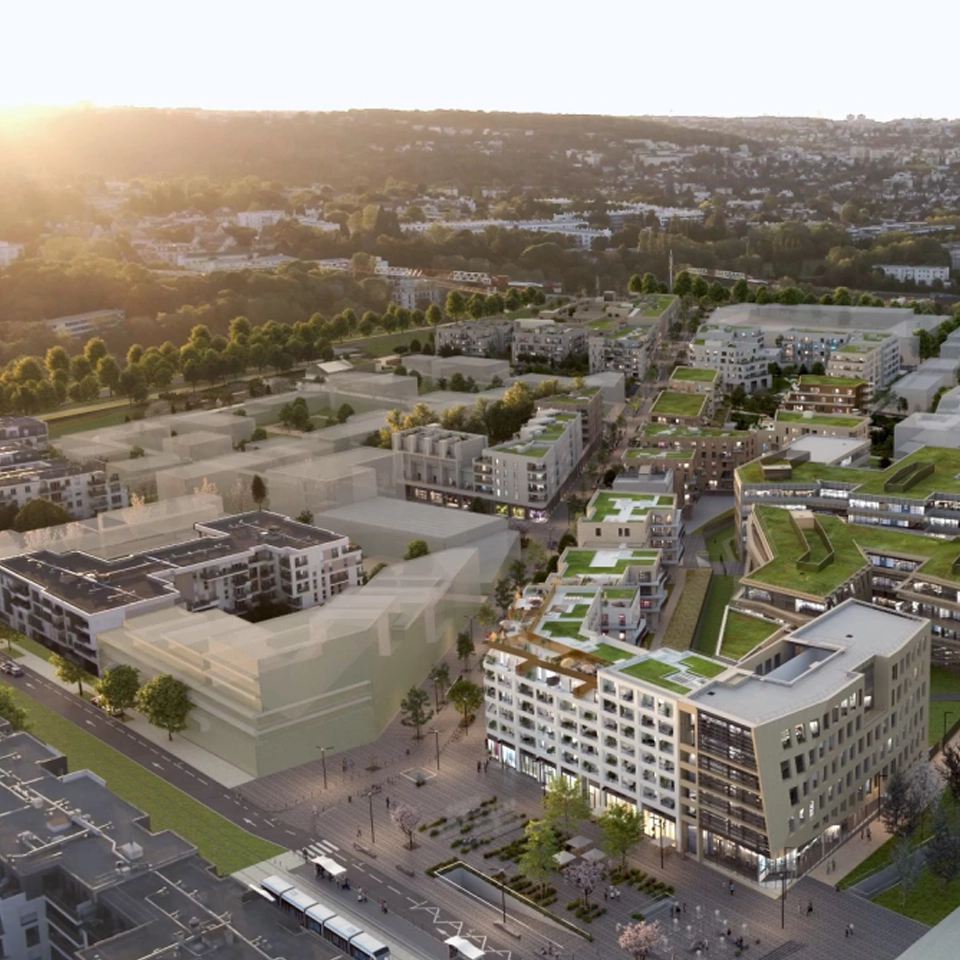
In Châtenay-Malabry, southwest of Paris, on the former École Centrale site, the LaVallée project is taking shape. This 223,000 m2 ecodistrict occupies a wonderful location between the Parc de Sceaux and the green belt linking the town to central Paris.
The project will include 2,200 homes, including 380 social housing units; 36,500 m² of offices to accommodate Lidl’s national headquarters; 15,000 m² of shopping (around 30 new stores); a high school for 700 students; a 19-classroom school complex; an 80-place crèche; an urban farm; parking space for 280 vehicles; and a huge seven hectares of public and private green spaces.
This new ecodistrict will innovate and set new standards in sustainable development, from the deconstruction of the old École Centrale through to the design, management and use of the new district.
Development Director and CEO of the Châtenay-Malabry Parc Centrale semi-public company at Eiffage AménagementWith Châtenay-Malabry, we have gone much further than usual, setting up a macro-scale circular economy loop to repurpose materials from the deconstruction.
L’ élément suivant est une vidéo Châtenay-Malabry: The La Vallée Eco-district as if you were there
-
7 hectaresof public and private green spaces
-
95%of concrete and materials from deconstruction to be reused on site
-
50%renewable energy with biomass and geothermal energy to be used for domestic heating and hot water
-
80%recycled materials in the GB5® Biophalt® asphalt being used in place of bitumen
-
250,000 hoursof social employment contracts created for around 400 people
University support for research and development
In tackling this ambitious project, the specially formed single-purpose semi-public company has the support of Eiffage and of France’s first centre of excellence for the sustainable city with Gustave Eiffel University, composed of four engineering schools (Ecole des Ponts, ParisTech, Ecole des Ingénieurs de la Ville de Paris, ESIEE Paris); Ecole d’architecture de la Ville et des Territoires; IFSTTAR (French Institute of Science and Technology for Transport, Development and Networks); and the IGN (national geographical and forestry information agency). Their mission is to examine innovative solutions for the ecodistrict in order to promote sustainable urban development.
The centre of excellence has identified eight research areas based on four criteria:
- Low-carbon design: the urban construction site - new transport services - the augmented functionality street
- Circular economy: circular economy for materials
- Urban agriculture and biodiversity: new uses for soil - urban agriculture - biodiversity - water management
- New uses: innovative and inclusive communication - uses defined and predicted by digital technology
L’ élément suivant est une vidéo Project E3S
Circular economy for materials
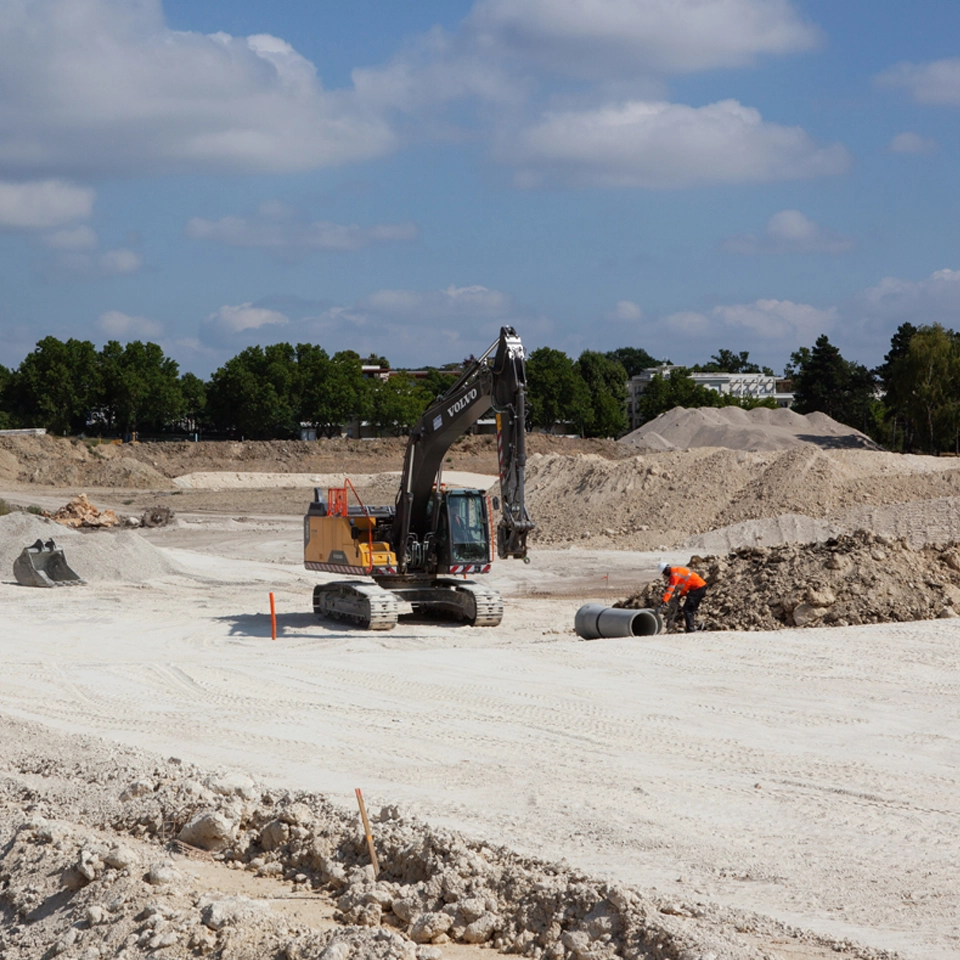
For this project, RéaVie identified all the materials and equipment with reuse potential.
It is managing the 120 tonnes of materials (toilets, woodwork, furniture, door and window hardware, floor coverings, electrical appliances, etc.) to be reused, repurposed or sold externally for use in other projects.
Residents of Châtenay-Malabry can access training courses provided through RéaVie’s Solid-R platform (safe working, methodical deconstruction, reconditioning, etc.). To fulfil this mission, 12 people are hosted on the platform (with around 1,000 hours completed since February 2018), and 50 others are involved as volunteers.
Broader access to employment
RéaVie’s involvement has created work for 38 local people on the project, four of whom are now permanently employed with one of the demolition companies. At the same time, many hours of social employment contracts have been or will be created, for a total of 250,000 hours and 400 people employed.
Low-carbon asphalt on the district’s roads and streets
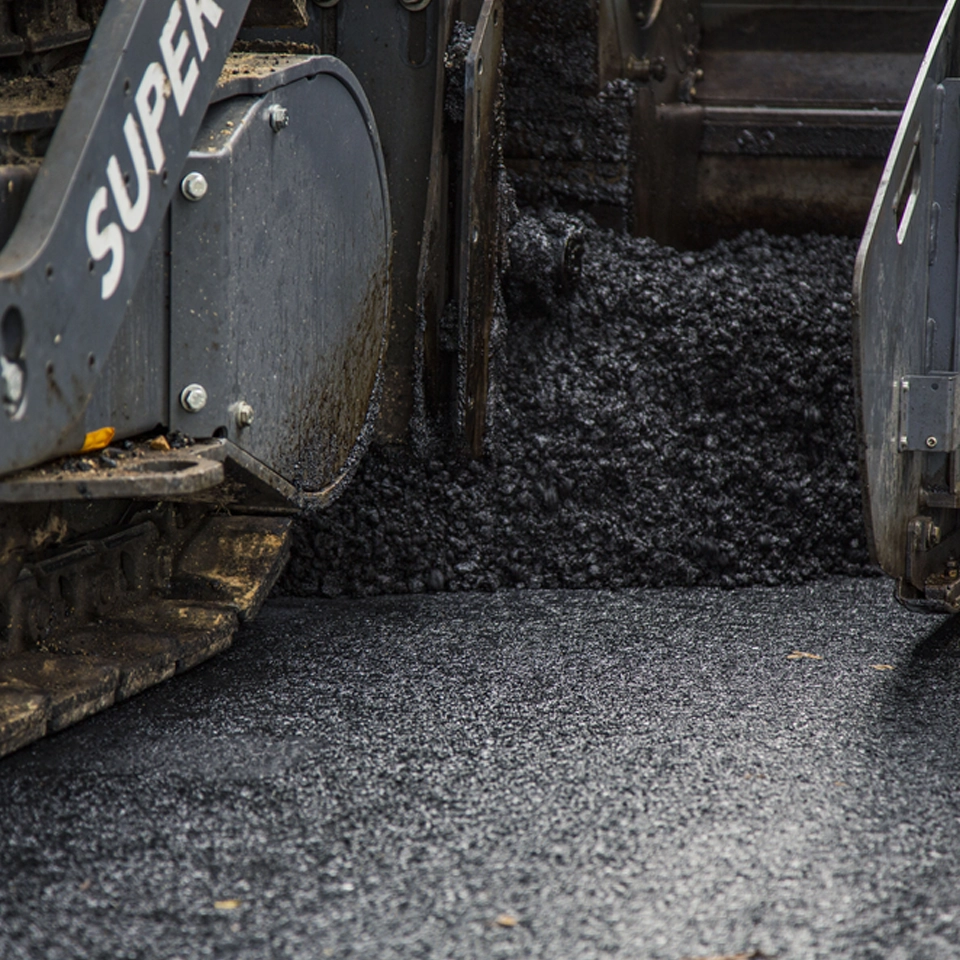
As part of the development work, Eiffage Route designed its GB5® Biophalt®, an environmentally responsible asphalt made from 80 percent recycled materials and plant-based binder and designed as a substitute for bitumen. It received “Biosourced Product” certification in 2020.
The 80 percent recycled materials are 50 percent recycled asphalt aggregates and 30 percent crushed concrete gravel sourced from the Châtenay-Malabry site. The simultaneous use of recycled asphalt aggregates, crushed concrete and plant-based binder is a first.
Additionally, manufacturing this asphalt at a reduced temperature (30 °C lower than with a conventional solution) helps reduce CO2 emissions.
Remaining faithful to Châtenay-Malabry’s "Park City" spirit, alongside the Parc de Sceaux and green belt, LaVallée will promote increased biodiversity through the creation of numerous planted spaces:
- A wide promenade passes through the district, with seasonal gardens, water features and places to meet and relax. The walk lined with silver lime trees inherited from the École Centrale is preserved.
- Almost half the district is given over to predominantly green and leafy public and private spaces. Seven hectares have been landscaped, with 500 new trees planted and a two-hectare promenade. A total of 116 trees have been retained, including 54 limes.
- Open-ground planting has been prioritised in the landscaping.
Data to benefit new uses
The area of “new uses” is currently undergoing radical transformation due to digital technology. The wider availability of data and information has significant potential for:
- Optimising services in a district.
- Reducing energy and water consumption.
- Creating social links and living better together.
- Improved management of the urban fabric and heritage, e.g. by detecting anomalies.
People in a town or city generate data every day, and it is essential that building, district and city managers are able to process it. The LaVallée project will offer the ecodistrict’s residents and users a range of digital services, and work is under way to identify a package of services to be developed, focused on three technical features:
- Services to users.
- Digital modelling (BIM, CIM).
- The district data aggregator, which will coordinate and unify 18 sub-aggregators.
Contracting authority:
Project carried out by the 1st SEMOP (Single-Operation Mixed Economy Company), formed by Eiffage Aménagement (50%), Caisse des Dépôts (16%), and the local authority (34%).
Project Management:
Eiffage Aménagement, Eiffage Immobilier, Eiffage Construction, Eiffage Route, Eiffage Énergie Systèmes.
Site area:
A site of 20.6 hectares.
Number of people working on site:
Between 400 and 1200 depending on the periods.
Works duration:
10 years.
Investment:
240 million for the development.
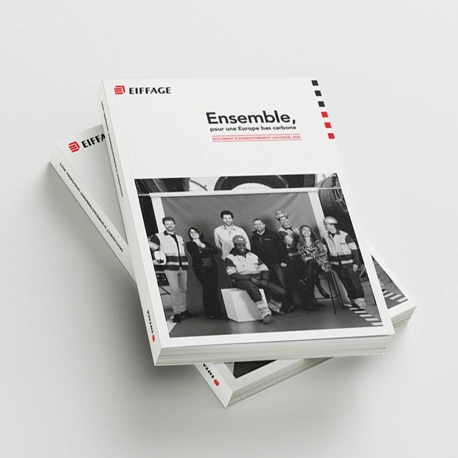
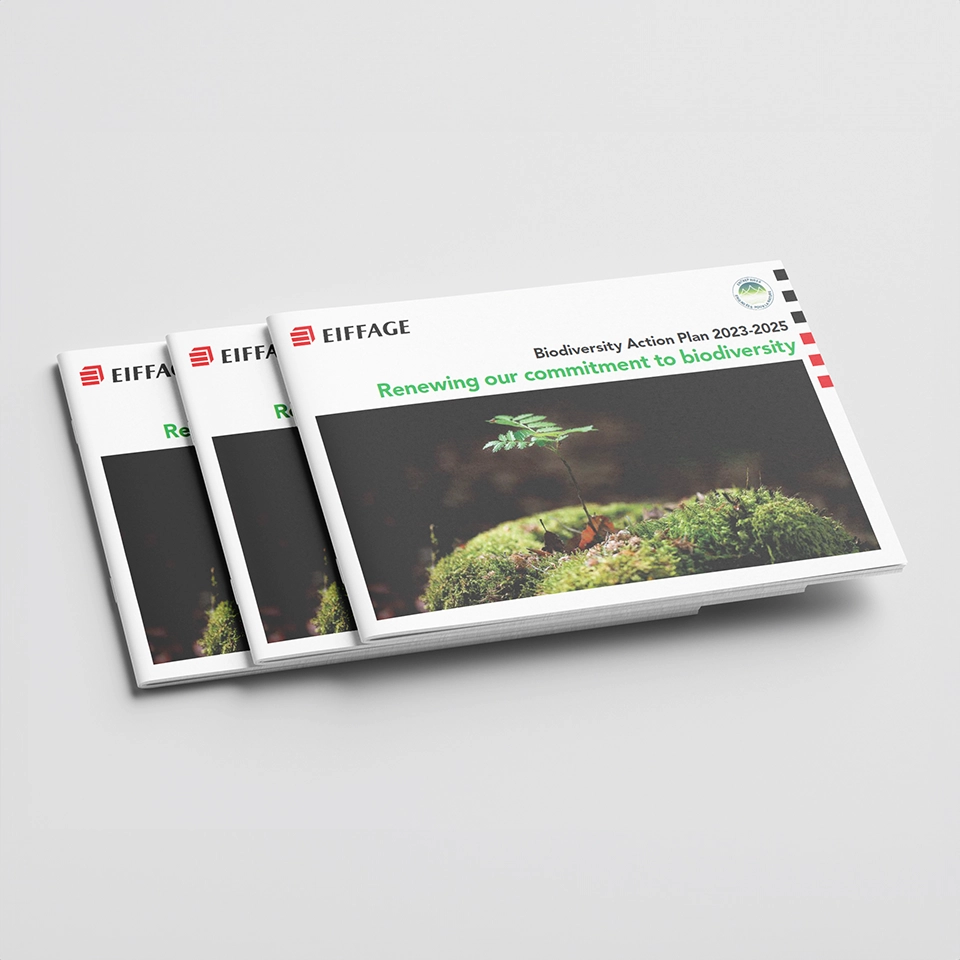
Social project with RéaVie: reuse of materials and broader access to employment
To avoid the wastage of large quantities of construction materials and products that could be repurposed, the social and environmental charity RéaVie has been involved since the project’s earliest stages. In 2017, it analysed the resources available in buildings on site and helped the company recondition recovered equipment (light fittings, curtains, switches, etc.) and add repurposing clauses to the technical briefs for the clean-up and demolition works packages.